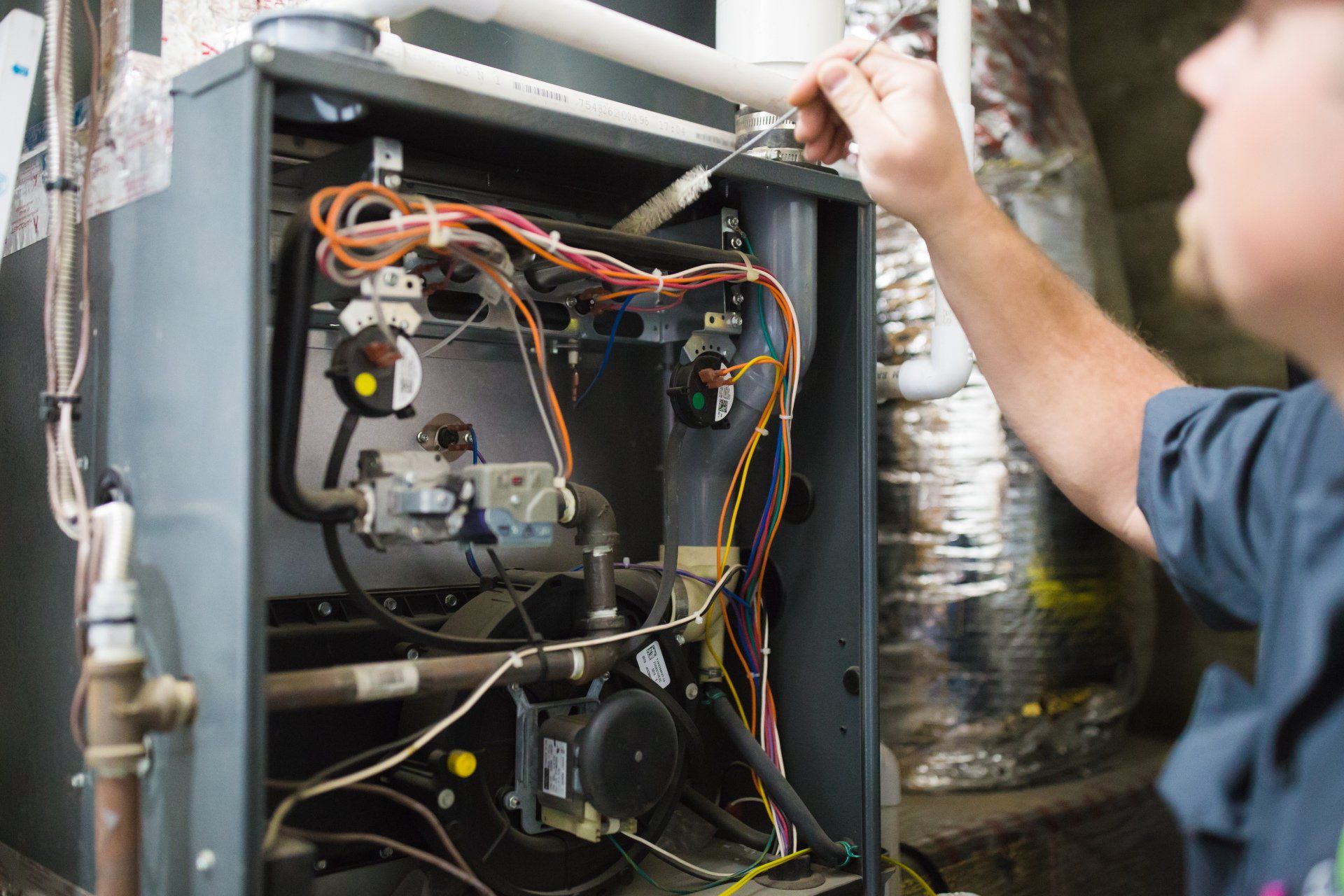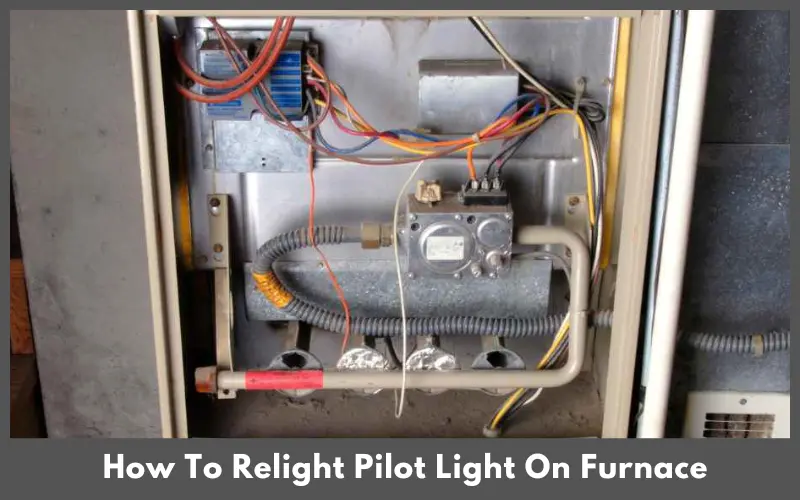How To Check The Pilot Light On A Furnace

Checking Your Furnace Pilot Light: A Comprehensive Guide
The pilot light on a furnace is a small, continuous flame that ignites the main burners when heat is called for. A malfunctioning or extinguished pilot light is a common reason why a furnace fails to start. While newer furnaces often use electronic ignition, many older models still rely on a pilot light system. This guide provides a step-by-step approach to checking and relighting your furnace pilot light, catering to homeowners, HVAC technicians, and facility managers alike.
Safety First: Essential Precautions
Before you begin, safety is paramount. Always adhere to these guidelines:
- Turn Off the Power: Locate the furnace's electrical disconnect switch (usually near the unit or on the wall) and switch it to the "Off" position. This prevents any accidental electrical shocks during the process.
- Shut Off the Gas Supply: Find the gas shut-off valve, typically located on the gas supply pipe leading to the furnace. Turn the valve to the "Off" position. The valve is usually parallel to the pipe when open and perpendicular when closed.
- Ventilate the Area: If you suspect a gas leak, open windows and doors to ventilate the area thoroughly. Natural gas is lighter than air and will dissipate upwards.
- No Open Flames: Avoid any open flames or sparks while working around the furnace. This includes lighters, matches, and even static electricity.
- Trust Your Senses: If you smell a strong gas odor, evacuate the premises immediately and contact your local gas company or a qualified HVAC technician from a safe location. Do not attempt to locate or repair the leak yourself.
Locating the Pilot Light Assembly
The pilot light assembly is typically located within the furnace's burner compartment. You may need to remove an access panel to gain visibility. Consult your furnace's owner's manual for the specific location. The assembly usually consists of:
- Pilot Light Burner: The small nozzle or burner where the pilot flame burns.
- Thermocouple or Flame Sensor: A safety device that detects the presence of the pilot flame. If the flame is not detected, the thermocouple shuts off the gas supply to prevent a gas buildup. Older systems will use a thermocouple. Newer systems will use a flame sensor.
- Pilot Gas Tube: A small metal tube that supplies gas to the pilot burner.
- Igniter Button or Piezo Igniter: Used to create a spark or a small flame to ignite the pilot gas. Some furnaces may have an electronic igniter instead of a manual igniter.
Checking for a Pilot Light
Carefully inspect the pilot light assembly. Look for a small, blue flame burning steadily at the pilot burner. If there is no flame, proceed to the relighting procedure.
Relighting the Pilot Light: Step-by-Step Instructions
These steps apply to furnaces with a manual pilot light relighting system. If your furnace has electronic ignition, consult your owner's manual for specific instructions.
- Turn the Gas Valve to the "Pilot" Position: Locate the gas control valve, often a dial-shaped knob. Push in and turn the knob to the "Pilot" position. You may need to use a small tool, such as a screwdriver, to depress the knob.
- Press and Hold the Reset Button: While holding the gas control valve in the "Pilot" position, press and hold the reset button (also labeled "Pilot"). This allows gas to flow to the pilot burner.
- Ignite the Pilot Light: While still holding the reset button, use a long-handled lighter or a spark igniter to ignite the gas at the pilot burner. Some furnaces have a built-in piezo igniter that creates a spark when a button is pressed.
- Hold the Reset Button: Continue holding the reset button for approximately 30-60 seconds. This allows the thermocouple to heat up and generate a small electrical current. This current keeps the gas valve open, allowing the pilot light to remain lit.
- Release the Reset Button: After 30-60 seconds, slowly release the reset button. The pilot light should remain lit. If the pilot light goes out, repeat steps 1-4. If it consistently fails to stay lit, there may be an issue with the thermocouple, gas supply, or pilot burner.
- Turn the Gas Valve to the "On" Position: Once the pilot light is burning steadily, turn the gas control valve to the "On" position.
- Turn the Power Back On: Return to the electrical disconnect switch and turn it to the "On" position.
- Test the Furnace: Set your thermostat to a temperature above the current room temperature to initiate a heating cycle. The main burners should ignite within a few minutes.
Troubleshooting Common Pilot Light Issues
If you encounter problems while relighting the pilot light, consider these common issues:
- Pilot Light Won't Stay Lit: This is often caused by a faulty thermocouple. The thermocouple may be dirty, damaged, or not making proper contact. Replacing the thermocouple is often a simple and inexpensive repair. Another possibility could be a dirty pilot orifice. Use a small wire to clean the orifice.
- No Gas Flow: Ensure the gas supply is turned on. Check for a tripped gas meter or a closed shut-off valve.
- Dirty Pilot Burner: A clogged or dirty pilot burner can prevent proper ignition. Clean the burner with a small brush or compressed air.
- Drafts: Strong drafts can extinguish the pilot light. Ensure the furnace area is well-protected from drafts.
- Gas Leak: If you suspect a gas leak, evacuate the premises immediately and contact your local gas company.
When to Call a Professional
While relighting a pilot light is often a simple task, some situations require professional assistance:
- Persistent Problems: If you cannot relight the pilot light after several attempts or if it consistently goes out, there may be a more serious underlying issue.
- Gas Leaks: If you suspect a gas leak, do not attempt to repair it yourself. Contact your local gas company or a qualified HVAC technician immediately.
- Unfamiliarity: If you are uncomfortable working with gas appliances or are unsure about any of the steps, it is always best to call a professional.
Preventative Maintenance for Your Furnace
Regular maintenance can help prevent pilot light problems and ensure the efficient operation of your furnace. Consider these preventative measures:
- Annual Inspections: Schedule an annual furnace inspection and tune-up with a qualified HVAC technician.
- Filter Changes: Replace your furnace filter regularly (typically every 1-3 months) to maintain proper airflow and prevent overheating.
- Burner Cleaning: Have your burner assembly cleaned periodically to remove dirt and debris.
- Carbon Monoxide Detectors: Install and maintain carbon monoxide detectors to protect against this deadly gas.
Understanding Furnace Ignition Systems: Pilot Lights vs. Electronic Ignition
Furnaces use different types of ignition systems. The two primary types are pilot light ignition and electronic ignition. Electronic ignition systems have largely replaced pilot light systems in newer furnaces due to their increased energy efficiency and safety features. Electronic ignition systems only ignite the burners when heat is needed, eliminating the continuous gas consumption of a pilot light. Electronic ignition systems come in two main types: Direct Spark Ignition (DSI) and Hot Surface Ignition (HSI).
DSI systems use a high-voltage spark to directly ignite the gas. HSI systems use a small heating element that glows red-hot to ignite the gas.
Cost Comparison: Pilot Light vs. Electronic Ignition
While furnaces with pilot lights may have a lower initial purchase price, they can be more expensive to operate in the long run due to the continuous gas consumption. Electronic ignition systems are more energy-efficient, but they may require more complex repairs.
Lifespan Considerations
With proper maintenance, both pilot light and electronic ignition systems can provide reliable heating for many years. However, electronic ignition systems may be more susceptible to electrical component failures.
By following these steps and understanding the basics of furnace operation, you can safely check and maintain your pilot light, ensuring a warm and comfortable home during the heating season. Remember to prioritize safety and consult with a qualified HVAC technician when needed.







:max_bytes(150000):strip_icc()/repairman-with-digital-infrared-thermometer-checks-gas-furnace-output-temperature-183783103-58b8971f3df78c353cc32283.jpg)
:max_bytes(150000):strip_icc()/checking-the-furnace-77890266-5c50db64c9e77c0001d76385.jpg)

